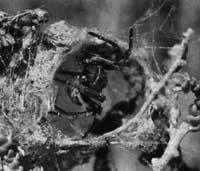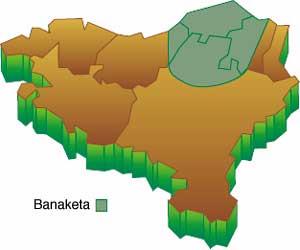House mouse, a human exploitation
1995/04/01 Elosegi Irurtia, Migel M. Iturria: Elhuyar aldizkaria

Krax, krax, krax, karrax, krax. What is our cat doing? While the cat dreams of a plate of milk, a couple of xagus taste the pantry beans while a third bites the piece of bacon hanging. The moment I lit the light they all disappeared in two jumps. No matter what. Once turned off the light will start again.
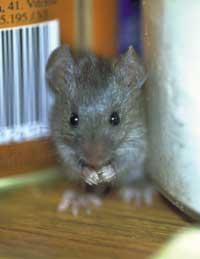
In the world there are more than 1,500 species of rodents, almost half of the mammals. Within this order, the family of muorids stands out, because it is the largest and because of the enormous proliferation of rats and mice belonging to this family. The adaptability to food and the different places of residence, as well as the great fertility they accompany, have made them spread all over the world, becoming one of the most successful in the Kingdom of Animals.
The domestic mouse ( Mus musculus) is of arid steppe and semi-finished origin of the Middle East. Long ago he began to approach the human being and follow him. Since dry, temperate and fertile places in food could be found in man's homes, the domestic mouse took advantage of all the possibilities offered and began to expand from Asia. In fact, today it is one of the most cosmopolitan animals and, except at the poles, it has managed to expand all other territories, reaching with man the New World and remote islands.
Rodent of 10-35 grams of weight and 7-10 cm of length. In a tail of few hairs, as long as the body, it has between 140 and 200 rings. Its end is pointed and the upper lip divided. Ears large, rounded membranes and, in the upper jaw, fillings adapted to rub. On the front legs have 4 fingers, on the rear 5 and leave traces of 12-14 mm. To differentiate itself from the most abundant in the Basque Country ( Apodemus sylvaticus), it should be noted that the house mouse is smaller and totally gray, while the lower one is whitish. The detection of these animals is simple, as they are located everywhere in places where they inhabit dark ice 2-2,5 mm thick and 6 mm long.
In Europe, among many subspecies adapted to different situations, two main races are distinguished: the western (grey), almost exclusively dependent on the human being, and the eastern, wilder (with a more brown back). Although wild apple trees can be found in Mediterranean latitudes, in the Basque Country they are very common in houses, hamlets, shacks, slurries, landfills and surroundings, but they barely move away from man.
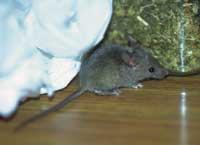
Dark and night is what you like most, but if there is occasion and tranquility, you can also take advantage of the day to find something to eat. They walk or jump and show ability to jump, run or swim.
As for food, it is omnivorous. Those who maintain a wildlife of origin feed on seeds, herbs and occasionally feed on some insect and accumulate food to combat winter hunger. However, locals have lost this last custom and eat anything they can find in humanized environments. From the bacon or cheese you like so much, you can also eat items as curious as soap, candle, cardboard or paper.
From the organizational point of view, the social behavior of these animals stands out. They are distributed in different clans and in these groups you can see the hierarchy. Each group has a different smell, so all members can get to know each other. The strongest male leads the team and defends his position before the competition. This male covers most females.
Although in wild colonies reproduction occurs in spring-autumn, the inhabitants of the houses do not have this limit and can do so at any time of the year. A female, despite having 10 breasts, may have up to 12 pups (usually 4-8). According to the book of records, the largest number of babies of a mammal in a single delivery has a house mouse that in 1951 gave birth to 32 offspring in North America. The normal thing is usually to grow between 4 and 8 times a year, but they can have 10 growths.
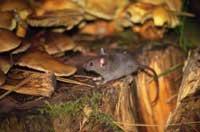
Nests can be made in any slot or hole in the house and to keep the pups warm are placed newspapers, rags and herbs crushed with the drunks. After an 18-24 day gestation, mice are born blind and naked. But 13 days later we open our eyes, with three weeks we leave the mammals of the mother, we separate them with 30 days and with 35-45 adults will be sexually!
Due to this speed of rapid reproduction, it is easy to observe that the populations of house mice can increase intensively and do so if possible. However, excessive population growth is regulated by the exclusive reproduction of dominant females and the sterilization of the rest. These reproduced females will also reduce the entry of offspring. On the other hand, the high mortality rate presented by this animal stands out. The domestic mouse, which can live between 4 and 6 years, has many enemies, and owls, cats and house dogs, mustelids and, of course, man are the most effective.
In the case of humans, the effort to chase away and/or kill mice has been enormous since time immemorial. Like rats, they can be harmful to health, since in feces they contain pathogenic refrigerants and in waxed food fungi are formed. Also, as food thefts are skillful and for some people they are terrible, along with baking bugs and rats, the most disgusting things in the world, poisons, strains and many other methods have been used. However, they have always found a way forward, at least so far.
Species: Mus musculus Family: murid Order: rodents Class: mammals |

Gai honi buruzko eduki gehiago
Elhuyarrek garatutako teknologia



